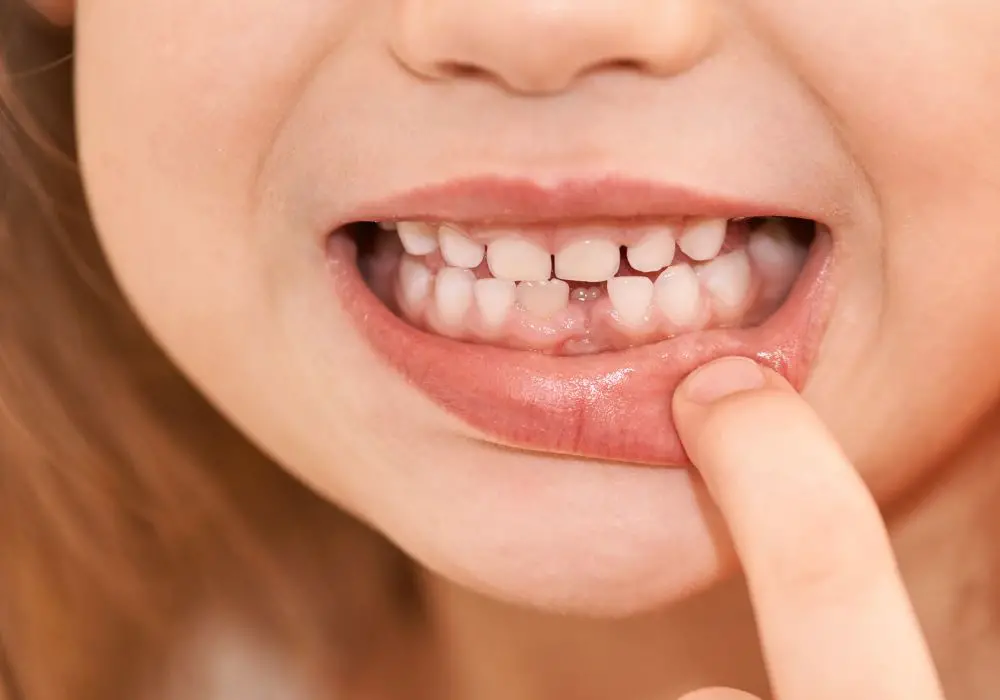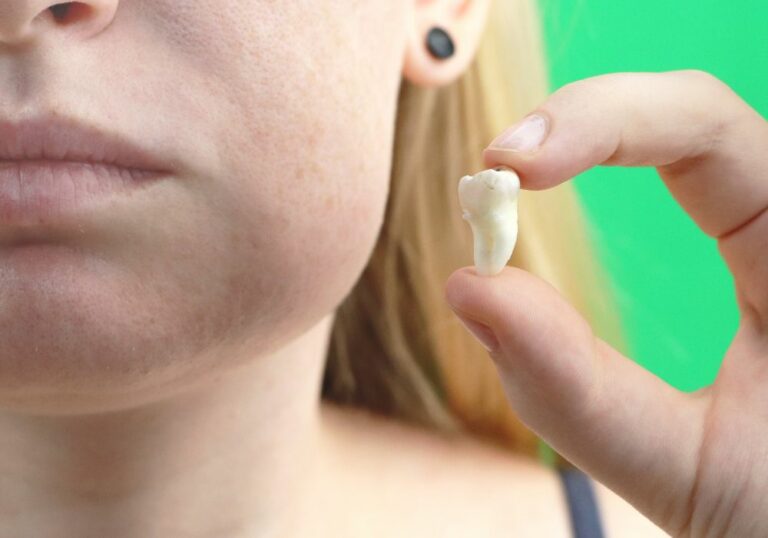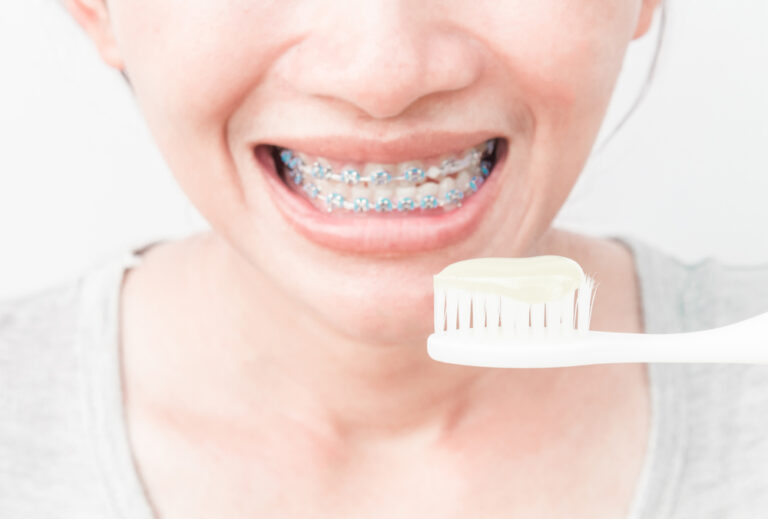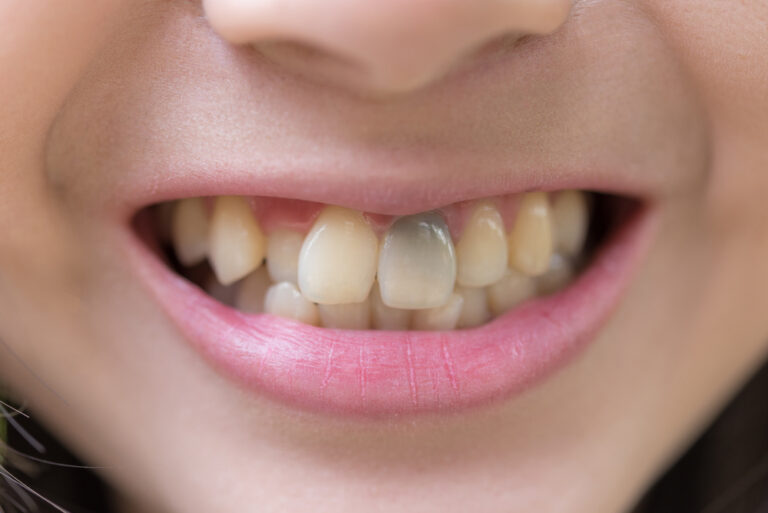Having a gap or space between teeth is incredibly common – nearly 25% of adults have one or more spaces between their teeth. While some gaps are due to missing teeth or extractions, most people are simply born with natural spaces between their teeth. The medical term for these spaces is diastema.
Diastemas can occur between any two teeth, but are most noticeable as a gap between the two upper front teeth. This area is also where gaps most frequently develop.
Causes of Tooth Gaps

There are several potential causes of diastema or gaps between teeth:
Jawbone Misalignment
One of the most common reasons for tooth gaps is a mismatch between the sizes of the upper and lower jaw. The maxilla (upper jaw) may be too narrow or the mandible (lower jaw) too wide. When the jaws aren’t properly lined up, this can leave spaces between teeth.
Jawbone size and shape are inherited genetically and set early in childhood development. Jaw misalignment also frequently accompanies oral habits like thumb-sucking or tongue thrusting that can push teeth out of position.
Small Teeth
If the teeth are smaller than average in size, they may not fit perfectly together in the jawbone arch, leaving small spaces between them. This is a genetic trait passed down from parents.
On average, the majority of adult incisors are 8-10 mm in width. People on the lower end of the scale may end up with numerous small gaps between teeth due to smaller tooth size.
Abnormally Shaped Teeth
Sometimes the contour or shape of the teeth can lead to gaps. Teeth with slender or cone-shaped contours may not fit tightly together. Teeth affected by enamel irregularities or hypoplasia can also have gaps between them.
Missing Teeth
When teeth are missing due to congenital absence, impaction, or extraction, the adjacent teeth will drift gradually into the open space. This creates increased spacing on either side. The upper front teeth tend to tilt and rotate when they have no opposing tooth.
Periodontal Disease
Untreated gingivitis can progress to periodontitis, which damages the supporting structures around teeth. The resulting bone loss leads to tooth mobility and spacing as teeth literally loosen in place.
Orthodontic Treatment
After braces or clear aligners, a retainer is required to keep teeth stationed in their new positions. If a retainer is not worn as prescribed, teeth can drift and recreate space between teeth.
Factors in Natural Gap Closure
Whether or not a tooth gap will resolve on its own depends on several influencing factors:
Age of the Patient
Younger patients tend to have more potential for spontaneous gap closure than adults. Teeth naturally drift somewhat throughout life due to chewing patterns, tongue position, bone growth, and other factors.
This gradual tooth movement is more significant in children and teens, whose bones are still growing and teeth are newly erupted. This allows small gaps to close naturally as the teeth shift into spaces.
As bone growth slows down in adulthood, the potential for natural gap closure greatly diminishes. Adult teeth are more “set” in position with less drift.
Gap Size
The width of the diastema also impacts the likelihood of closure. Smaller gaps of 1-2mm have a much better prognosis for closing on their own versus large gaps of 4mm or more.
Teeth can only drift so far through natural movement. Very wide spaces are less likely to completely disappear without orthodontic intervention.
Position of the Gap
Where the space is located also affects the potential for natural closure. Gaps between the upper front incisor teeth have more potential for drifting together spontaneously than spaces between back teeth.
The incisors have more room to move forward in the jawbone and can tip or rotate easier. Posterior teeth have less space available and bone support is tighter.
Cause of the Gap
The reason behind the space also plays a role. Gaps caused by dental overcrowding or a childhood oral habit like thumb-sucking have a better chance of closing naturally. These behaviors push teeth out of alignment but don’t change the tooth or jaw sizes.
On the other hand, gaps caused by genetically small or misshapen teeth, congenitally missing teeth, or gum disease have a poorer prognosis for unaided closure. The only solution is orthodontic or prosthetic treatments.
When Gaps Are Likely to Close Naturally

Based on the influencing factors above, here are some general guidelines on when tooth gaps may close spontaneously without treatment:
- Children & adolescents up to age 18 – Spaces up to 3mm can potentially close on their own as teeth shift.
- Young adults under age 30 – Gaps of 1-2mm have a fair possibility of closing through natural teeth drift.
- Adults over age 30 – Very unlikely spaces will close on their own without orthodontic intervention.
So in many cases, small gaps in younger patients may resolve over several months or years as the teeth settle into alignment. However, treatment is often required for complete closure, especially in older teens and adults once jaw growth has stabilized.
Treatments to Close Tooth Gaps
While some tooth gaps may close unaided in the right circumstances, most require purposeful orthodontic or restorative treatments to correct diastema. Here are the most common solutions:
Dental Braces
Traditional orthodontic braces use gentle pressure over an extended period of time to bring teeth together into alignment. Braces are one of the most predictable and successful ways to definitively close gaps between teeth.
Braces utilize brackets cemented onto each tooth which are then connected with an archwire that guides teeth into position. Rubber bands and other appliances may also be incorporated. On average, braces take 1-3 years to achieve desired results.
Clear Aligner Therapy
Clear plastic aligners like Invisalign are an alternative to braces that can also effectively move teeth to close gaps. Aligners are custom fabricated in a series to gradually shift teeth into place over months.
Aligners are removable, invisible during wear, and more comfortable than braces. However, treatment times may take longer than braces for large gaps, as the forces produced are milder.
Dental Bonding
Bonding places tooth-colored resin material directly on the tooth surface to add width, lengthen teeth, or improve small cosmetic defects like gaps under 2mm. The material bonds to the enamel for a seamless look.
Bonding is a quick and inexpensive way to immediately improve small gaps in a single appointment with no orthodontics required. However, bonding material is not as strong and durable as natural enamel.
Dental Veneers
Veneers are thin shells of porcelain or composite resin that get permanently bonded onto the front surface of teeth. Getting veneers can completely reshape and reconstruct the smile line, closing moderate to large gaps in the process.
Because veneers are custom-made, they can lengthen and widen teeth to ideal proportions that eliminate all diastema. However, some natural tooth structure must be removed for placement.
Dental Implants
When gaps exist due to missing teeth, dental implants surgically replace the lost tooth roots and provide strong, non-mobile support for replacement teeth. The visible crown restores the space, creating a seamless smile.
Implants fused to the jawbone prevent adjacent teeth from tilting or rotating into the empty space over time. This maintains the original healthy spacing and alignment.
Frenectomy
In some cases, an overgrown frenum (piece of tissue between teeth) can exert pulling forces that lead to gaps. Removing this tissue through a frenectomy procedure can eliminate the tension and allow teeth to come together naturally.
This tends to be most effective for lower gaps in younger patients. In adults, the elasticity of the tissue decreases so it may not significantly close spaces on its own.
| Treatment | Best For | Duration | Average Cost |
|---|---|---|---|
| Braces | Closing gaps of any size | 1-3 years | $3,000 – $7,000 |
| Clear aligners | Small to moderate gaps | 6-18 months | $3,000 – $8,000 |
| Bonding | Tiny gaps < 2mm | Single visit | $100 – $600 per tooth |
| Veneers | Moderate to large gaps | 2+ visits | $500 – $2,500 per tooth |
| Implants | Replacing missing teeth | Several months | $3,000 – $4,500 per tooth |
| Frenectomy | Small lower front gaps | Single visit | $300 – $1,000 |
Selecting the ideal treatment option depends on the patient’s specific situation, budget, and personal preferences. Consulting an orthodontist allows customization of a gap closure plan for optimal aesthetic results.
Lifestyle Changes to Help Close Gaps
While orthodontic interventions yield the most significant and predictable results, certain lifestyle adjustments may help stimulate mild natural teeth drifts to reduce gaps:
- Stop harmful oral habits – Thumb-sucking, tongue thrusting, nail-biting, and chewing on pens can all exacerbate tooth gaps over time. Eliminating these habits allows teeth to stabilize.
- Improve oral hygiene – Keep teeth and gums healthy through proper daily brushing and flossing. Poor hygiene leads to dental problems that can cause tooth loss and gaps.
- Eat a good diet – Chewing hard, crunchy fruits and vegetables helps clean teeth naturally. Soft, processed foods allow teeth to drift more readily.
- Quit smoking – Smoking is closely linked to increased gum disease, eventual tooth loss, and excessive gaps. Kicking the habit improves oral health.
- Chew evenly on both sides – Avoiding chewing on one preferred side helps prevent uneven dental drifting that widens gaps.
While implementing good oral care habits can support dental alignment, these measures alone will rarely close gaps fully without orthodontic help. However, improving overall oral health provides a strong foundation.
Cosmetic Concerns About Tooth Gaps

Many people feel self-conscious or embarrassed about having a visible gap or spaces between their front teeth. However, diastema is a normal variation in tooth alignment. Here are some tips for feeling better about your smile:
- Focus on dental health – While your teeth may not be perfectly straight, good oral hygiene keeps your smile strong, healthy and confident.
- Remember gaps are common – Spaces between teeth are a routine occurrence and don’t detract from an attractive smile. Many celebrities feature their gap proudly.
- Get objective opinions – Ask family or friends for honest opinions about your gap. You may be noticing it far more than anyone else.
- Consider cosmetic options – Braces, veneers or bonding can provide a quick confidence boost if needed. But accept your smile as it is.
- Embrace your unique features – Don’t let small imperfections undermine your self-image. We all have quirks that make us interesting.
Gaps between teeth are normal variances that don’t take away from a beautiful smile. While orthodontics can eliminate spaces, good dental health and self-confidence make your smile shine, gap or no gap.
Frequently Asked Questions About Tooth Gaps
Can tooth gaps be prevented?
Gaps caused by oral habits like thumb-sucking can possibly be prevented by stopping the behavior early through reminders, monitoring or orthodontic appliances. However, gaps caused by inherited tooth sizes or misaligned jaws cannot be prevented, only corrected.
Do gaps affect eating or chewing ability?
In most cases, small to moderate spaces do not impact eating or chewing function. However, large gaps or missing multiple teeth can make biting, chewing and tearing food more difficult. Getting treatment to close spaces helps restore proper mastication.
Can a frenectomy help close gaps in adults?
A frenectomy, or removal of the tissue between teeth, is sometimes performed in children to allow gap closure by releasing this tension. In adults, the frenal tissue has stiffened, so this technique may not significantly close spaces on its own. It tends to work best in younger patients.
Will gaps lead to more cavities or gum disease?
Spaces themselves do not inherently cause oral health issues. However, food debris can more readily become trapped between teeth with sizable gaps. This increases plaque accumulation and potential for decay or periodontal inflammation if hygiene is inadequate.
Can Invisalign work for large gaps or missing teeth?
Invisalign is most effective at closing mild to moderate gaps approximately 1-6mm wide. Large gaps or spaces from missing teeth are better handled through braces or dental implants for the fastest, most predictable results. Invisalign can be used for minor refinements after major orthodontic movements though.







